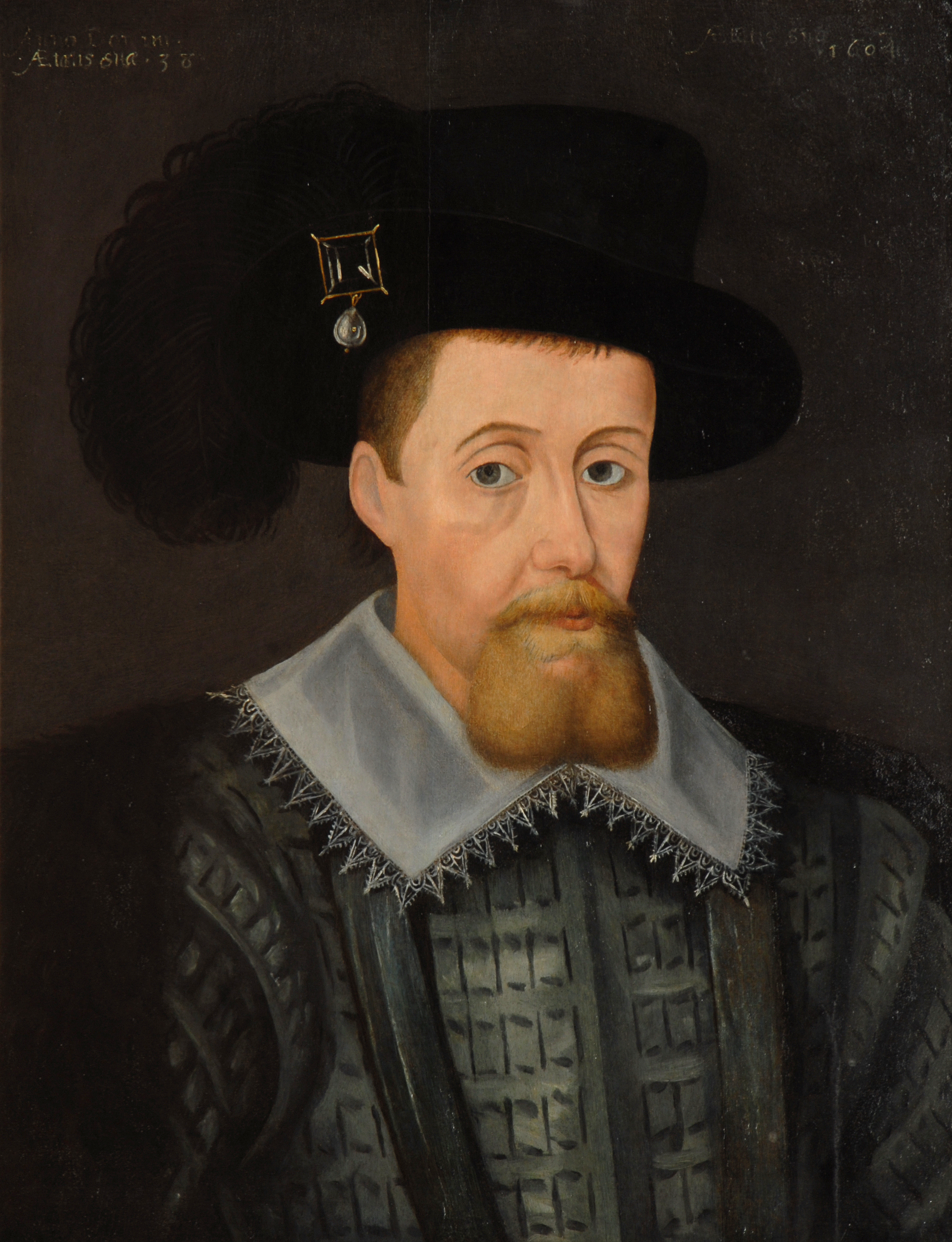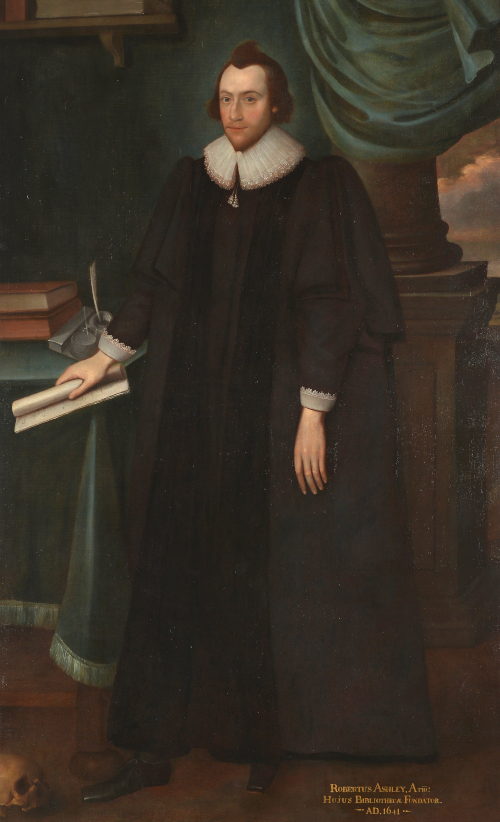 When Queen Elizabeth I died in 1603, she was succeeded by her cousin James, King of Scotland, and (excepting the period of the Commonwealth) he and his successors in the house of Stuart would rule England, Scotland and finally the unified Great Britain until 1714. It was under James, in 1608, that the land finally officially entered the Middle and Inner Temples’ hands, when they were conveyed to the two Inns to be held in trust. The Letters Patent signed by the king included conditions – not only were the Inns required to provide education and accommodation for students and practitioners of the law, but they were mandated to maintain Temple Church and provide a house for the Master of the Temple. The charter is still in force today, and these conditions are still observed.
When Queen Elizabeth I died in 1603, she was succeeded by her cousin James, King of Scotland, and (excepting the period of the Commonwealth) he and his successors in the house of Stuart would rule England, Scotland and finally the unified Great Britain until 1714. It was under James, in 1608, that the land finally officially entered the Middle and Inner Temples’ hands, when they were conveyed to the two Inns to be held in trust. The Letters Patent signed by the king included conditions – not only were the Inns required to provide education and accommodation for students and practitioners of the law, but they were mandated to maintain Temple Church and provide a house for the Master of the Temple. The charter is still in force today, and these conditions are still observed.
Despite the Temple lands having effectively been handed over, royal scrutiny of the Inn continued and even intensified. Letters to the Benchers, some of which survive in the archive, periodically arrived from King James and his son and successor, King Charles I, usually to encourage or chastise the Inn in some way. For example, Charles wrote to encourage the practice of archery among gentlemen of the Inn, to chastise the members for their lax observation of Lenten discipline, particularly during the Lent Reading, and requested a contribution to the repair of the old St Paul’s Cathedral.
In this more Puritan age, and with royal pressure, the Inn did try to crack down on some of its profligacy. While the previous century’s traditions of revelry had continued, the Benchers began to curtail the greater excesses, forcing the gaming and festivity underground. Over Christmas 1639, junior members of the Inn attempted to break open the Hall and kitchen in order to feast and revel - a transgression for which they were severely punished. The royal connection was not, however, all criticism and curtailment. In 1613 and 1634, the Inn participated in the staging of ‘masques’ – courtly dramatic shows – in celebration of royal occasions. A letter of thanks from King Charles I to the Benchers for their role in staging the later masque survives in the archive.
Nonetheless, the royal missives and demands, with their concerns about both religious observance and military readiness, reflect the tensions of the times, which erupted in the 1640s into Civil War between Charles I and Parliament. With the outbreak of war, much of life at the Inn ground to a halt – Parliament met little, dining was suspended and Readings ceased to be given. Certain pieces of Temple Church silver were by the Parliamentarians to fund their cause, and some royalist Benchers departed for good, including Sir Richard Lane, who left his chambers and library and joined the King at Oxford, becoming his Lord Keeper and eventually ending up in exile on Jersey.
 Under the interregnum and the rule of Cromwell, the Inn quietly returned to some of its former activities, although serious changes had taken place. Readings, for example, the great centrepiece of the Inn’s educational calendar, were not reinstated and would never return with their old grandeur. Following the Restoration of the Monarchy in 1660, the Inn took care to burnish its royalist credentials, expressing its loyalty and acquiring some of the great royal portraits which hang in Hall today.
Under the interregnum and the rule of Cromwell, the Inn quietly returned to some of its former activities, although serious changes had taken place. Readings, for example, the great centrepiece of the Inn’s educational calendar, were not reinstated and would never return with their old grandeur. Following the Restoration of the Monarchy in 1660, the Inn took care to burnish its royalist credentials, expressing its loyalty and acquiring some of the great royal portraits which hang in Hall today.
Two events of this century had particularly permanent legacies for the Inn. The first was the bequest in 1641, by the Middle Templar Robert Ashley, of his extensive library to the Society. The Inn had been without a library for some time – there had been a more ancient one, but by the time of Henry VIII’s reign the books had all been stolen. Ashley’s legacy, which also provided funds for the upkeep of a Keeper for the collection, was the foundation of the present day Middle Temple Library. Many of the books he left are still in the Inn’s care today.
The second event altered the physical fabric of the Inn almost entirely. The Middle Temple (unlike its unfortunate neighbours to the east) had largely survived the Great Fire of London intact, but on the cold evening of January 1679, a fire started in a set of chambers. By the time it was out the following day, most of the Inn had burned to the ground. The spread had finally been halted by the use of gunpowder to destroy buildings in its path, the night having been so cold that water froze in its buckets, and it is thought that those fighting the fire had concentrated on saving the Hall, rather than the ramshackle chambers buildings.
This devastation offered the Inn an opportunity to rebuild, and rebuild it did. Much of the work was undertaken by the speculator, economist and fire insurance pioneer Dr Nicholas Barbon, who had made a fortune on similar rebuilding work in the years following the Great Fire. His work makes up part of the Inn's built environment to this day, and his buildings can be seen across London. This period also saw the construction of the present gatehouse at the top of the Lane, to a design by Sir Christopher Wren in 1684.
Renewed and beautified, and notwithstanding some internal political tensions and the age-old distemper between Benchers and junior members, the Middle Temple can safely be said to have weathered the storm, which often reached and crossed the doorstep, of the turbulent seventeenth century.